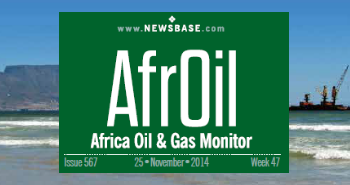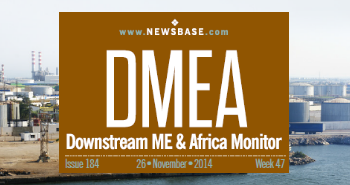Morocco’s gas supply woes
Against the backdrop of tight gas markets in Europe, Morocco has lost access to gas from Algeria, its main supplier
WHAT: Morocco is no longer receiving 6 bcm per year of gas via the GME pipeline.
WHY: Algeria has cut off supplies in response to ongoing diplomatic disputes.
WHAT NEXT: The country aims to start importing LNG and boosting domestic production, but these plans will not come to fruition any time soon.
Global natural gas markets have become increasingly tight this year, largely because the world economy has started to regain the ground it lost as a consequence of the coronavirus (COVID-19) pandemic. This tightness has been evident in Europe, where gas markets have taken a strongly bullish turn because of concerns about high prices and low supplies.
However, Europe is not the only gas market that has come under pressure within the last few weeks. Morocco is also likely to experience supply problems this heating season, but for very different reasons.
This essay will seek to explain why Morocco may be headed for gas shortages and assess the likely impact of recent developments.
Algeria, Morocco and Europe
Europe’s current supply/demand situation stems in no small part from the fact that Russia, which is the Continent’s largest external supplier of gas, has been limiting deliveries. However, two European states, Spain and Portugal, are coming under additional pressure for an unrelated reason.
The extra pressure stems from Algeria’s decision to halt shipments through Gas Maghreb-Europe (GME), a 12bn cubic metre per year pipeline that delivers 6 bcm per year to the Iberian Peninsula and 6 bcm per year to Morocco. Algiers stopped pumping gas through GME on November 1, 2021, following the expiration of its 25-year transit agreement with Rabat.
That agreement had provided for Morocco to receive about 6 bcm per year of gas from Hassi R’Mel, a field in Algeria’s Laghouat Province, in exchange for hosting a 522-km section of GME. Once Algeria let the accord lapse with renewal, though, gas deliveries stopped.
Rising tensions
This halt is unfortunate for Morocco, as the GME system had been supplying enough gas to fuel thermal power plants (TPPs) that produce about 10% of the country’s electricity. However, it was not exactly surprising in light of the fact that relations between Algiers and Rabat have been deteriorating over the last few years.
Algerian officials allege that tensions are rising because of the Moroccan government’s alleged support for the Movement for the Autonomy of Kabylie, an ethnic Berber group demanding the right to self-governance in Kabylie Province. They have also charged Morocco of complicity in the wave of forest fires that swept northern Algeria in early August of this year, killing more than 90 people.
Morocco’s government, for its part, has charged Algeria with backing the Polisario Front, a group formed to establish Western Sahara’s independence from Morocco. Officials in Rabat have also been responding more harshly to Algiers’ claims since they secured the US government’s pledge to support the Moroccan claim to sovereignty over Western Sahara in exchange for the normalisation of relations with Israel.
Algeria’s promises to Europe
In the run-up to the shutdown of the GME pipeline, Algeria’s government did try to assuage Spain’s concerns about possible gas shortages.
Specifically, officials in Algiers pledged last month to compensate Spanish buyers for the loss of the 6 bcm per year delivered via GME. They said they would raise the throughput capacity of another pipeline – Medgaz, which passes only through Algerian territory on its way to Spain – from 8 bcm per year to 10.5 bcm per year and also deliver LNG cargoes by tanker if necessary.
These promises won’t help Rabat, however. Algeria appears to have no interest in discussing the matter with Morocco, so GME is not likely to resume operations any time soon. As such, the Moroccan gas market is set to remain tight for the time being.
Domestic gas production
In the longer term, there are other supply options.
On the one hand, Morocco is trying to develop its domestic gas resources. The country’s proven gas reserves amounted to 50bn cubic feet (1.42bn cubic metres) as of 2017, but the number is anticipated to rise as the exploration campaigns being carried out by international oil companies (IOCs) move forward.
Martin Sherriff, the head of Welligence Energy Analytics’ Middle East and North Africa (MENA) group, drew attention to several ongoing Moroccan upstream projects. “Indigenous sources of gas such as the Tendrara-5 Horst, Lalla Mimouna Sud, Moulay Bouchta Ouest and Lixus projects could also increase long-term domestic gas production,” he told NewsBase. (TE-5 Horst has been assigned to Sound Energy, while Lalla Mimouna Sud and Moulay Bouchta Ouest are being developed by SDX Energy. Meanwhile, Lixus, the offshore block that includes the Anchois gas field, is held by Chariot Oil & Gas. All three of these companies are based in the UK.)
FSRUs for LNG imports
On the other hand, Morocco is considering the possibility of using floating storage and regasification units (FSRUs) to import gas in the form of LNG. According to Sherriff, the North African state might be able to start receiving gas in this fashion a few years down the road.
“In the longer term, gas shortages could be filled [with] imported LNG,” he said. “[US-based] Predator [Oil & Gas] has submitted a bid to build a floating LNG [FLNG] regasification terminal with an initial capacity of 110mn cubic feet [3.12mn cubic metres] per day by 2025, rising to 170 mmcf [4.81 mcm] per day in 2030 and 300 mmcf [8.5 mcm] per day in 2040.”
Hamish Kinnear, a Middle East and North Africa analyst for Verisk Maplecroft, also highlighted the potential of FSRUs as a possible solution for Morocco in the years to come. “Morocco could construct LNG terminals or bring in floating storage [and] regasification units (FSRU) to import gas normally supplied through GME,” he told NewsBase.
Kinnear indicated that he believed Rabat was keen on the FSRU option, referring to Morocco’s Minister of Energy Transition and Sustainable Development Leila Benali's statements on November 8 about plans to prepare local ports for incoming LNG shipments. “Tangier may be a possible location for an FSRU,” he remarked.
Like Sherriff, he said he saw FSRUs as a longer-term option that was not quite viable yet. Morocco’s gas needs are likely to remain relatively modest for the time being, and the country can switch to other types of fuel in the short term, he stated. “Morocco is able to import more oil and coal and utilise existing spare capacity at other power plants ... [There] are increased costs for Morocco with the end of Algerian supply, but it’s a major inconvenience, not an existential issue for its energy supply,” he said.




Follow us online